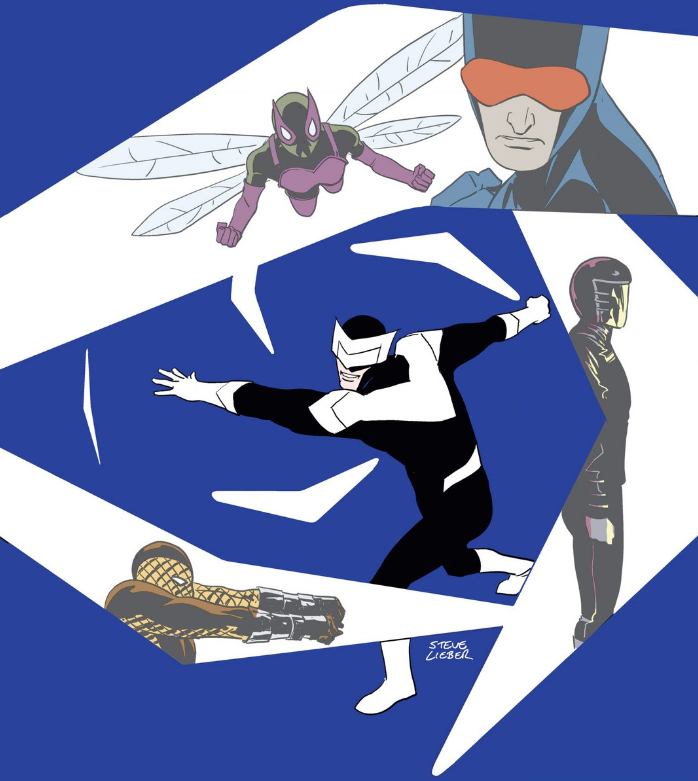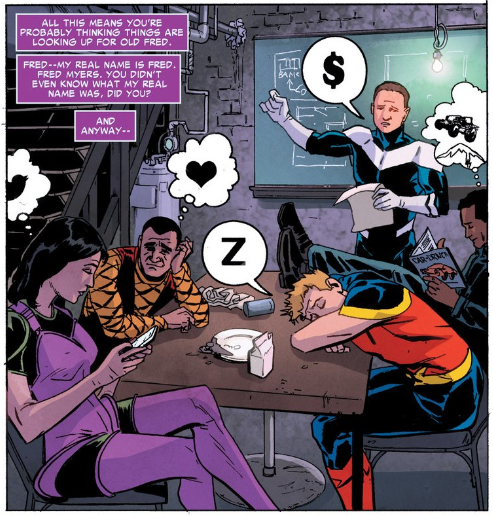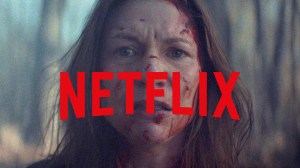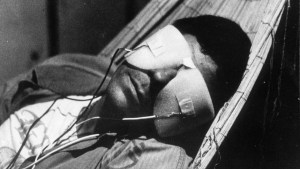
Nick Spencer and Steve Lieber’s Superior Foes of Spider-Man is the current holder of the title “Best Comic Nobody Seems To Be Reading”. It’s an illustrious designation that has been held by many great comics like Warren Ellis and Stuart Immonen’s Nextwave: Agents of H.A.T.E. and Roger Langridge and Chris Samnee’s Thor, The Mighty Avenger. The thing that all of these series share (besides being cancelled well before their time) is a distinct flair for visual storytelling that not only set them apart from their contemporaries at Marvel Comics, but from all comics on the newsstand (or put more accurately, comic store shelves). Lieber has brought more than two decades of experience and craftsmanship to bear in Superior Foes and it shows on almost every page. One of the most interesting things Lieber has contributed to the comic is the inclusion of thought bubbles and other visual cues for the characters thoughts.
Videos by ComicBook.com
At one point thought bubbles were present in almost every superhero comic. A look through popular comics of the 70’s and 80’s reveal X-Men and New Gods thinking their way through entire sequences. Even the action oriented style of Frank Miller made liberal use of thought bubbles during his Daredevil run (1979-1983) before later discarding them in “Batman: Year One” (1987). It’s around that time, when Miller and Alan Moore’s most famous works were having a massive impact on the medium, that thought bubbles began to disappear from mainstream comics. Today they are almost non-existent. That’s why their appearance in Superior Foes of Spider-Man is a bit of a surprise.
Spencer and Lieber do not include a lot of thought bubbles in their story. Compared to something like Chris Claremont’s Uncanny X-Men, they are almost non-existent. But they still exist and when they are utilized it is to great effect. Lieber has said, “One of the toughest things that comics has to overcome is the lack of physical space to tell stories.” His use of thought bubbles always help to create a solution to that problem. Rather than providing extended prose exposition or reiterating the actions within the panels like many comics from the 60’s and 70’s, the thought bubbles in Superior Foes of Spider-Man provide succinct beats of characterization and context.

In the first issue, there are two panels that display all five members of the Sinister Six (one of the series ongoing jokes) each with an attached thought bubble. In these panels, each character is provided with a motive that is quickly understood by readers. It’s an incredible amount of information to pack into a single panel. The bubbles contain icons instead of prose. The Twitter bird or a heart paired with a look of disinterest or lovesickness provide more information about what Beetle or Shocker may be interested in than an entire paragraph could. If the comic relied solely on dialogue, not only would it take more space to convey all of the information contained in this panel, but it would be significantly less clear. The icons also create a sense of change when they are used again in the first issue’s final panel. The characters are assembled once more, but this time their thoughts have changed to reflect brand new or slightly different concerns. Lieber not only packs five distinct thoughts into a single panel, but uses them to further characterize the team as well.

Thought bubbles are capable of providing more than exposition or characterization. Spencer and Lieber have created some of the series’ funniest moments by simply revealing the contents of someone’s head. While in conversation with his overpriced attorney, Boomerang begins to daydream while swearing he is paying attention. The thought bubbles that encircle his head reveal where his mind really is though. The childish nature of the stick figures further reflects Boomerang’s state of mind. He isn’t interested in what is going on in his attorney’s office and would rather fantasize about taking out his frustrations with a razor sharp boomerang (better known as a razor-rang). Even in this humorous instance, Boomerang is being characterized by the silliness of his inner monologue.

Not all of the panels featuring a character’s inner thoughts include a puffy cloud to denote them as thoughts. Many examples are marked as fantasies through Lieber’s page layouts, the use of stick figures, or simply by their fantastical nature (even considering the story is set in the Marvel universe). While on a date, Boomerang begins to fantasize about being in love. Panels framed by hearts with a cherub-like Shocker and Overdrive peering over them reveal the full extent of his fantasy. The dead superheroes in one panel and costumed wedding party in another reveal all of the hearts dancing about the corners of the page to be poorly thought out fantasies. Rachelle Rosenberg’s colors help further denote the difference between reality and inner fantasy by applying a rose tinting over every panel, except the one based in reality. This creates a visual metaphor of the rose-tinted glasses through which Boomerang is seeing his potential future. Like all of the other examples so far, it’s another funny moment of characterization, providing ample insight in limited space.
The use of thought bubbles and internal fantasies is just one of the many things that make Superior Foes of Spider-Man stand out. The story bounces between action, comedy, crime, and superheroics in almost every issue and employs the comics medium to best tell each element of the story. No tool is too odd or old fashioned. The use of thought bubbles reveals that no tool can be too odd or old fashioned. Their use in this series reveals the many ways that fantasies and thoughts can enhance a comic. They maximize the use of space, create humorous scenarios, introduce new perspectives, and do so much more. When thought bubbles faded from popularity in the 1990’s, it was an example of throwing the baby out with the bathwater. They (like the cliche in my previous sentence) may have been over used, but were not useless.
When asked about employing thought bubbles in an era where they are considered outdated, Lieber said, “The language of comics has a wonderful and varied set of tools and we’ve abandoned two-thirds of them. It breaks my heart.” Lieber and Spencer have no fear of how their work will be viewed in comparison to mainstream trends. They are only concerned with telling their story the best they can and will use any and every tool available to do so. Superior Foes of Spider-Man may be coming to a conclusion in October, but just like Nextwave and Thor: The Mighty Avenger it is bound to find a second life in collections. It’s simply too well told to be ignored for long.








